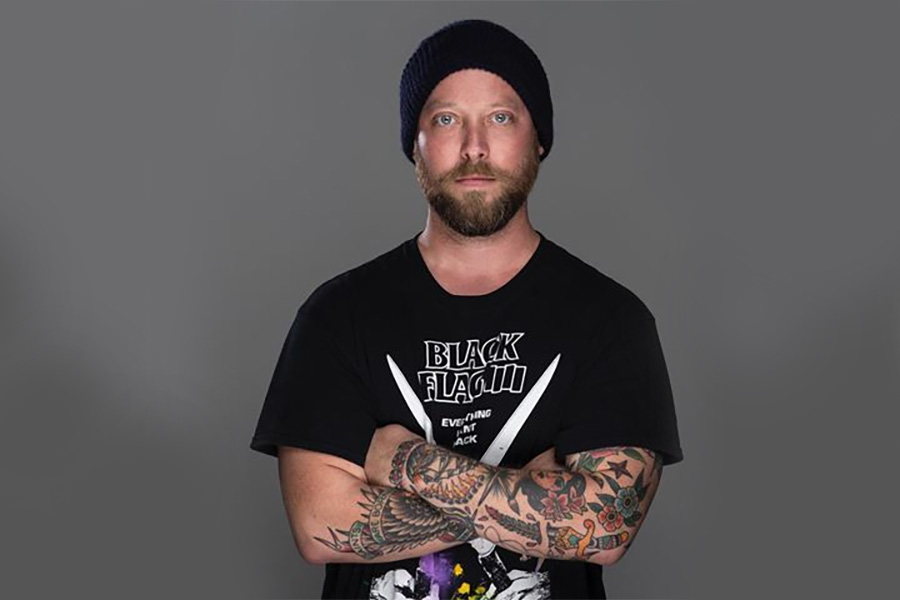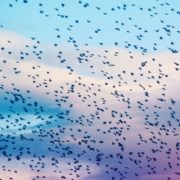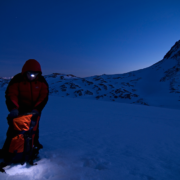Tell us a little bit about yourself?
My name is John Brendan Guinan and I am an artist from Washington, D.C. I grew up in Washington and come from a family of social justice activists. My father was an activist, author and playwright who founded CCNV (The Community for Creative Nonviolence). I view art as a vocation and never had any intention of becoming a professional artist. It has been a calling and necessity for me.
Art is my prayer, my meditation, and my healing practice. I work to produce art that reminds people of the transcendent. In doing so, my hope is to shift people’s paradigms every so slightly so that they may be reminded of something greater than themselves.
How did you get involved with art?
I have always been self-expressive and creative. I excelled at drawing and painting since youth but have also produced music and shot photography. I even had a stint as the lead singer in a band in Belfast, Northern Ireland shortly after college. When I was 16 my art teacher indicated to me that she wanted to be the first to own a Guinan original so offered me $100 to buy a piece from me that I had made in class. That experience always stuck with me. But I disconnected from painting for some time to pursue a more conventional path working in the private sector. During that period, I was still making art but less intensively. After a handful of years in the private sector, my life lost much of its purpose and I became quite disillusioned. I separated from my wife, left my job and fell into a deep depression. My father was also sick at that time. I was abusing alcohol and after hitting a bottom I quit drinking and joined a 12 step program. My world was simply put a mess. I was in a state of despair. Slowly but surely I began to find some peace. I got a job working with a soccer and slam poetry non-profit in D.C. and began painting obsessively 10-12 hours a night in my small studio apartment.
After some months, a friend came over and was completely blindsided by the amount of work that I had produced. They urged me to set up a website and after a few weeks, I caught the attention of someone at the Smithsonian who was also a curator. The rest is history.
Also Read: Thrill the Artist in Your Life with These 5 Unique Kinds of Gifts
After a handful of years in the private sector, my life lost much of its purpose and I became quite disillusioned. I separated from my wife, left my job and fell into a deep depression. My father was also sick at that time. I was abusing alcohol and after hitting a bottom I quit drinking and joined a 12 step program. My world was simply put a mess. I was in a state of despair. Slowly but surely I began to find some peace. I got a job working with a soccer and slam poetry non-profit in D.C. and began painting obsessively 10-12 hours a night in my small studio apartment. After some months, a friend came over and was completely blindsided by the amount of work that I had produced. They urged me to set up a website and after a few weeks, I caught the attention of someone at the Smithsonian who was also a curator. The rest is history.
Also Read: Wet Florals Publishment Behind the Scenes





You are a self-taught artist. Where do you derive your inspiration from?
When I was at a low point in my life, my inspiration was really necessity. I needed to paint. It became like breathing for me. I had no outcome in mind and only wished for some brief solace and peace in connecting with something spiritual through the practice of painting. I was working through my father’s sickness and subsequent death, being in recovery, existential issues around my career/vocation, and separating from my wife. I also desperately wanted to connect with the transcendent. I painted deep into the night many times not realising that I hadn’t eaten for hours or that my body was physically exhausted. Painting did and continues to serve a deep spiritual purpose for me. I am primarily inspired by my father in heaven, the afterlife, youthful innocence, community, and spirituality. My father was a devout and deeply spiritual Catholic priest before he fell in love with my mother and had my three siblings and I. The value system and example that he and my mother impressed upon me has had a deep impact on what inspires me and what my goals are as an artist. I truly believe that he works through me when I paint. I don’t take credit for any of the paintings that I produce. I really think that my role as an artist is to be a conduit for the transcendent. Though, I find inspiration day-to-day in more microcosmic ways, as well.
What are the influences that have had an impact on your artistic process?
One of my heroes is Anselm Kiefer. I look up to him in many ways. I think that my spiritual paradigm is similar to his in many ways. He reminds us of the transcendent, the spiritual, and our past in a monumental and possessed fashion. I strive for that impact. I also have a deep respect and admiration for the innovative process, brilliant color usage and mercurial weight of the work that D.C. based color field artist Sam Gilliam has mastered. He is also an amazing person that quietly and in an unassuming monk-like fashion goes about his work. Another one of my heroes is Gerard Richter. Richter, like Gilliam and Kiefer, is a master. He is quoted as saying, “Now there are no priests or philosophers left, artists are the most important people in the world.” Teachers, community organisers, doctors and other service oriented folks may be a little more important but I can relate to his point. His view really reflects the notion of the artist serving humanity in a spiritually honest sense. I wholeheartedly agree with that idea and think it’s our job to fearlessly speak the spiritual truth.



The journey of creating the pieces for this show was incredibly intense and ultimately healing. It was a practice of me becoming intimate with my relationship with my father and myself. It was also a practice of learning how to connect with the spiritual. I was transformed by the experience. I also had no idea that these pieces that I had created in my apartment and in my sister’s garage late at night or in the very early hours of the morning would be viewed by anyone. Hence, there is a truth and intimacy to them. One of the pieces that sums of the spiritual intensity of producing this body of work was a 5 by 6 FT painting called, “Mother, Father, Holy Ghost”. The piece was comprised of over 30,000 streams of consciousness words overlapping about my father. I was truly unconscious when I produced the painting. The writings consist of things like, “Please hug me. Can you see me? Are you proud? Where are you right now? What can you see? Do you love me? Please stay by my side”.
Share with us your creative process behind the series of large-scale paintings that you did for the exhibition – “Rough Ride”.
“Rough Ride” was a show that was curated by Black Paper out of Los Angeles. The curator brought me and another amazing artist, DJ Rice out of Baltimore together. My series was part of a greater body of work called “The Prince of Empyrean”. Empyrean is the highest point in heaven, as referenced in Dante’s Divine Comedy, where everything is comprised of light and the holiest of saints and angels reside. Most of the paintings were produced with ink, acrylic paint, polyurethane, alcohol, and glitter. I was also very strict about not using a brush for any of the pieces excluding one oil piece. So, I literally applied all of the acrylic, ink, and glitter by hand with no gloves. I wanted to re-engage with the youthful wonderment and the purity of unbridled creative self-expression. I was interested in creating visceral, honest, earnest pieces that represented the joy of painting.





You are called the “artist priest”. How has your spirituality affected your art?
A fellow artist started calling me the “artist priest” and it has stuck to an extent. Priest is a loaded term but I feel strongly that we all can carry a priestly message to humanity whether ordained by a religion or not. We all have the potential and means to be messengers of the spiritual. My means of carrying this message happens to be through art. Spirituality is the bedrock for everything in my life. If I’m not spiritually grounded or in tune then I can’t be optimal in friendship, with family, with art or in service to my community. If I didn’t have a spiritual value system and practice I wouldn’t have much to say or express through my art. Prayer, contemplation, and meditation are keys to me connecting in a spiritually honest sense with my artistic process. Hopefully, a commitment to my own spiritual practice will impact my ability to be a messenger and effect the lives and ideas of others when they engage with my work.
How has your style changed over the years?
I grew up in DC proper and as a kid loved punk rock, skateboarding and graffiti. In DC, these worlds sort of all collided. I started doing graffiti when I was young and then began to engage in more classical techniques in high school. I evolved from figurative work to more impressionistic pieces and then made a leap to a kind of unbridled and unconfined abstract approach.
What’s your favourite artwork and why?
I love artwork that is totally earnest, intimate and honest. The truth of spirit in art is in my eyes is almost always undeniable, whether you appreciate the technique or outcome. There is a lot of art that I don’t necessarily like but when I look at it I can very quickly recognise that it is truthful and intimate. A lot of children’s art has this effect on me. I may not look at it and be blown away by the composition or color schema but it speaks to my most primal need for connection and intimacy. In terms of a specific piece of art, I love the painting “Utopia” by Anselm Kiefer. It is a part of the permanent collection at the Met and is vast in scale. In the piece, there is a meandering road that dissipates by utilizing a beautiful perspective into the distance. The road is bordered by a mystical and ashy field of grass and flowers. “Utopia” in latin translates to “that which does not exist or nowhere”. I think this piece very succinctly and powerfully gets at the notion that the pursuit of utopia within the material world is an endless sojourn. We really need to find peace in the moment and remind ourselves that we will never arrive at a point of maximum satisfaction in this life.
What are you currently working on?
I just completed a proposal for FRIEZE, London’s 2017 Artist Award and am working on coordinating a show in the Hamptons, NY for this summer. I also hope to have a solo exhibition of large-scale mixed media paintings in NYC sometime next year.
How do you see the art market and the art world changing?
I think that merit is becoming more en vogue than degrees from prestigious institutions. That’s refreshing and allows for artists whether trained or untrained in the academy system to expose their work to people. Also, the internet is allowing for more disruption of the gallery system. I think this is a positive and will allow for great artists in far-reaching regions and from diverse background have a voice in the art world.
Any advice for upcoming artists.
Be true to thine self. Be honest. Use art to serve humanity. Work tenaciously and obsessively. Open yourself up to constructive criticism from people that you trust. And make art because you have to and not because you want to arrive somewhere.
You can see John’s works on his portfolio website – www.johnbrendanguinan.com.
John’s artist portfolio website is built on Pixpa


